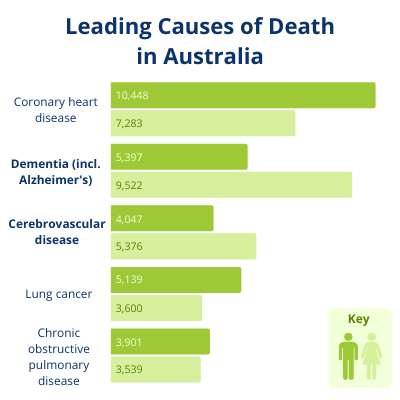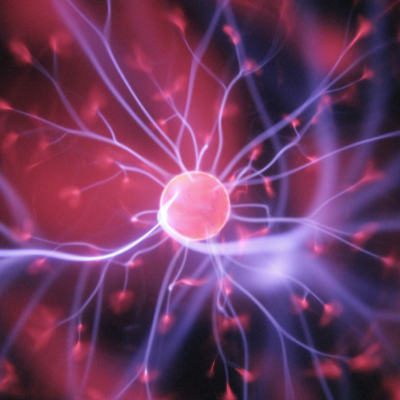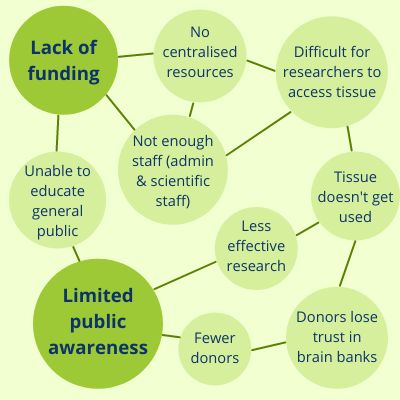20 Oct Everything you need to know about brain donation
More than 1 in 10 Australians are registered organ donors, but did you know you can donate your brain for research?
Brain donation programs are an essential part of research, but they are facing a number of threats in Australia. Even before COVID-19, these programs have struggled to secure funding, and not many people know that they exist. We spoke to Associate Professor Greg Sutherland and Ali Sweeney from the NSW Brain Tissue Resource Centre to explain everything you need to know about brain donation, including:
- The impact of COVID-19 on medical research
- How brain donation works
- What kind of research is possible with brain tissue
- The achievements of research so far
- Challenges to brain donation programs
- Possible solutions
- The future of brain banking in Australia
Click on the headings above to jump to any section.
How has COVID-19 changed the medical world?
COVID has been an all-consuming presence over the past 18 months: in our lives, our work, the media, and healthcare. Scientists around the world have been looking into treatments, vaccines, long-term impacts, and countless other aspects of this pandemic. There’s no question that this has been a priority, and it has thankfully resulted in a number of vaccines that will help us resume ‘normal’ life.
But what has happened to the rest of the medical world? We’ve seen pharmaceutical companies and hospitalisations in headlines almost daily and medical news consumption has nearly doubled compared to 2019 (1). While other medical news isn’t as universally relevant as COVID-19 information, these stories are still important. Like in August, when BreastScreen NSW made the decision to suspend all routine breast cancer screening so that staff could manage COVID-19 vaccination and testing (2). COVID-19 testing is also expensive – one report found that the cost of 12 hours of testing could fund a comprehensive newborn screening program (3).
This redirection of resources has also happened in medical research, with funds going towards the immediate issue of the pandemic. This has been necessary, but as we move forward these impacts need to be taken into account. Some of the leading causes of death in Australia relate to the brain – dementia and cerebrovascular disease (i.e. stroke) are second and third, respectively (4).
Neurological research is complex and includes a broad range of diseases, disorders, and injuries. But some of the systems supporting neurological research were already facing challenges before COVID-19 hit, such as brain donation. Rebuilding these programs will be an important step as researchers try to learn more about how the brain works, and how these diseases can be treated.

What is brain donation?
Brain donation is when a person and their family decide to donate their brain for medical research after their death. It’s a fundamental part of advancing our understanding of diseases affecting the brain. The brain is a notoriously complex organ, and studying tissue allows researchers to (5):
- Confirm a suspected diagnosis, and use this information to improve existing diagnostic criteria.
- Investigate things that don’t show up in imaging technology like magnetic resonance imaging (MRIs).
- Compare brain tissue between people with and without neurological diseases to determine why only some people get diseases like dementia and stroke.

These are just a few reasons that researchers might need to study brain tissue. It goes without saying that brain donation and organ donation are very different. Brain tissue is used for research, whereas organ donation is for transplants. Registering as a brain donor is also an ongoing process, rather than the one-time sign up for organ donation.
The NSW Brain Tissue Resource Centre (NSW BTRC) recruits donors through the ‘Using Our Brains’ program, which keeps in contact with donors on a regular basis. Ali Sweeney manages donor relationships, which involves collecting medical, administrative, and logistical information. Brain donation isn’t organised by a central government organisation, so changes in address or next of kin need to be followed up manually.
“Donors fill out their medical history, including mental health and their lifestyle. How much they’re drinking or smoking, how much exercise they’re doing, if they live alone or with other people… their own subjective self reporting of their cognitive status,” she says, regarding the kind of questions they ask. “Then we update that once a year through some sort of survey on our program, for however many years.”
“I describe it as a long-term relationship - there's a lot of communication between us and the donors.”
Associate Professor Greg Sutherland is the director of the NSW BTRC, and an Academic at The University of Sydney’s School of Medical Sciences. He clarifies why this background information is so important.
“Brain tissue is most important if you know a lot about what happened to that person before they died,” he explains. “The brain doesn’t exist without a body, and a body without a unique genetic make-up and lifetime full of experiences.
These surveys give researchers the information they need to understand how someone’s brain is affected by their overall lifestyle and health. “Modern molecular techniques produce complex data … The more you know, the more you’re in a position where you can look at the molecular data across a disease group and find a potential reason for saying why this person has developed the disease. For example, if you know they lived rurally for most of their life, would they be exposed to pesticides? And you can try to look at those things.”
Studying the brain alone, without a detailed life history, can leave a lot of questions unanswered, because researchers normally don’t have access to the rest of the person’s body (6). This is also why brain donation programs can rarely accept donations at the end of someone’s life.
Registering to donate your brain is evidently more complex than other types of organ donation programs – but the extra effort can make a huge difference for researchers. Brain banking is essentially a type of ‘research infrastructure’. It’s one of the systems in place that provides resources to scientists, enables new research, and creates opportunities to identify new research areas. NSW BTRC supplies Australian donor tissue to researchers all around the world including the US and Germany.

What kind of research is possible with brain tissue?
With all the work required to organise brain donation, you might be wondering why it is necessary. After all, there have been significant improvements in imaging technologies, stem cell research, and analysis of other tissues (like cerebrospinal fluid) (5). While new technologies like CRISPR are making animal models that increasingly look like human disease.
Despite these scientific advances, brain tissue is still an unparalleled resource for so many conditions. It allows researchers to investigate diseases at macroscopic, microscopic, and molecular levels, presenting diverse opportunities for research (5). On top of this, many diseases are just so uniquely human, so animal models aren’t as effective as they are in other fields.

A/Prof Sutherland discussed some of the main roles of brain tissue in research, from modelling diseases to developing diagnostic markers.
“We are so good with molecular research. We can work out now on a single cell, or a single astrocyte-level, everything that the cell produces. And we also know a lot about psychology, or clinically what the symptoms of these disorders look like. But between the two of them, there’s a massive knowledge abyss.”
“You've got millions of pieces of molecular information. What does it mean, ultimately, for why someone develops a disease or disorder?”
This concept of a ‘knowledge abyss’ appears to be the million-dollar question in neurology. The answer is to take information from all sources – imaging data, molecular mechanisms, symptoms, and more – and synthesise it into something useful. Brain tissue is unique in enabling these discoveries, because researchers can investigate the disease at so many levels.

The journey so far: what has been achieved through brain tissue research?
This research might sound a bit abstract, but brain tissue research has had many benefits for the scientific community and the general public. Some of these achievements include:
- Over 600 research papers published from 2004-2014 using Australian brain tissue (7);
- Finding large-scale solutions to prevent neurological disease (like dietary additives);
- Creating robotic hands (8);
- A ‘virtual epileptic patient’ model, allowing researchers to study epilepsy in a digital brain (8);
- Along with most findings from the advent of brain research until the late 20th century, when imaging technology became more widely available.
The NSW BTRC was actually key in adding thiamine to baking flour, thanks to the work of the founding director of the organisation, Clive Harper.
“Clive Harper was originally interested in a disease called Wernicke’s Disease,” A/Prof Sutherland explains. Wernicke’s Disease begins with symptoms of confusion, inability to coordinate voluntary movement, and eye problems.
“It was common amongst Australian alcoholics in the 1970s and 80s, and there is a chronic form of the disease called Korsakoff Syndrome,” he continues. “It’s one of those diseases that psychology students learn about, because it gives you permanent memory loss.”
This is a unique type of memory impairment, because it involves short-term (anterograde) and long-term (retrograde) memory loss. It leaves patients in the scary position of not remembering events from their past, while finding it difficult to create new memories.
“The side issue here is that people who are drinking and getting most of their nutrition through alcohol are thiamine deficient. So alongside some other groups, our research prompted the industry to include thiamine (and a few other nutrients, like folate) into baking flour.”
Since this happened in 1991, Wernicke’s Disease and Korsakoff Syndrome have become incredibly rare. Bread is a core dietary staple for most Australians, even if their overall diet is nutrient-deficient. This is just one example of research creating a tangible change to prevent thousands of people from experiencing these diseases over the past decades.

Brain tissue has also been pivotal for research into Alzheimer’s disease (AD), the most common form of dementia. AD is thought to be caused by an abnormal build-up of proteins in the brain, including ‘amyloid’ which form plaques around brain cells. This was a prime target for new treatments for many years, but research is now at a crossroads – because although they dissolve plaques, amyloid-modifying treatments show very modest effects on slowing cognitive symptoms in trials.
There is now greater interest in targets other than amyloid, but it is unclear what researchers should prioritise. Genetic findings suggest that anomalies in lipid metabolism, immune function and cell transport are the key pathways in susceptible individuals. Brain tissue studies help confirm these pathways and determine which specific components should be targeted with new treatments (10). NSW BTRC tissue has also recently been used to demonstrate common pathways between AD and alcohol-related brain damage (11).
There is still a long way to go before a cure for AD is found, but the role that brain tissue plays in advancing research is undeniable.

“We’re trying to make brain banking a research jewel for Australia and the key is to have more people interested in it,” A/Prof Sutherland says. It’s not only a relatively unknown pursuit but “I think it’s a confronting issue for a number of reasons – there’s something about the brain that’s just different to any other organ. I’m talking about people’s souls, the spirit … it’s about identity.”
Despite these apparent barriers, there are also many people who have already signed up to donor programs. Ali Sweeney has studied the public perceptions of brain donation. One part of the study asked people why they aren’t a brain donor, if they agree that it’s important.
“Most people say that they think that they’re too young, or they thought that they were already a brain donor, when they signed up for organ donation through DonateLife,” she says. “Or they just don’t know that brain donation exists”.
These are all common misconceptions about brain donation, and we hope this article can clear up some of these myths. But the more complex challenge is funding. How can brain banks, research institutions, and the government collaborate to solve this problem?
Reviving the Australian Brain Bank Network
Brain banking requires centralised resources, clear protocols, and specialised staff in order to be effective (9). This kind of stability can only be maintained with ongoing funding. From 2005 – 2014, the National Health and Medical Research Council (NHMRC) funded an Australian Brain Bank Network (ABBN). Funding has been ad-hoc since 2014, with brain banks operating on a year-to-year basis that undermines their role as research infrastructure (7). Some of these impacts include:
- Brain banks closing or operating at low capacity. The Queensland and South Australian brain banks are effectively closed, and the Victorian operation is just operating at a low capacity (7).
- Community & donor dissatisfaction. Becoming a brain donor is a highly personal and emotional decision. When brain banks can’t communicate with the donor and their family, or can’t honour a donation, it breaks down the trust that was initially established (7).
- Researchers find it hard to get research funds to access tissue. Brain banks in Australia rely on prospective researchers getting grants to do experiments on brain tissue operations and success rates continue to dive.
While the ABBN was funded, the state brain banks became partially unified. But over the past seven years, brain banks have struggled to fulfil their commitment to both researchers and donors (7). Brain banks now compete for enabling funding via recommendations from National Collaborative Research Infrastructure Strategy (NCRIS) against all scientific endeavours in Australia.
“The problem is that the research funding for basic science to understand these diseases – that isn’t the flavour of the month,” A/Prof Sutherland explains. “You’ve got existing drugs that might be repurposed to treat something like COVID-19. And that’s what we’re seeing at the moment, when it’s just a matter of supporting clinical trials … this is where we’ve seen the research money being used because findings are either translatable or closer to translation than the ‘basic science’ that brain banks facilitate.”
This isn’t to say that basic science is completely unsupported. Thousands of projects are funded by the government, research institutions, and charities (like the Brain Foundation) every year. But without research infrastructure like brain banks many of those projects won’t be possible.
It’s a pressing issue, with over one million Australians expected to have dementia by 2056. There are other initiatives to prevent dementia, but brain tissue is particularly important for research into neurodegenerative disorders (7).
Brain banks like the NSW BTRC are still active and provide tissue to researchers whenever possible. But with stable, centralised funding, their impact could be amplified by operating within a wider group of brain banks across the country.
The future of brain donation in Australia
Brain donation programs exist across the globe, so why should we make the effort to fund it in Australia? Researchers collaborate internationally all the time, using each others’ data and building off previous research findings.
A/Prof Sutherland says that there are a few reasons. “We could rely on those other banks, but it would cost us. Not only a financial cost, but it comes back to this concept that the brain exists within the body … Australia has a unique population in many ways, and local brain banking could support research that is really world class.”
This uniqueness was key in the research on Wernicke’s Disease. It was actually funded by the National Institute of Alcohol Abuse and Alcoholism in the US because Australian alcoholics are less likely to be poly drug users compared to Americans. Many people may have been smokers, but they were less likely to use marijuana, amphetamines, or other drugs – allowing the relationship between alcohol and the brain to be studied more independently.
We could see this play out in so many other areas, based on Australian lifestyles, environmental factors, and behaviour. The brain is a complex organ, and with so many risk factors in neurological disease, funding Australian brain research is incredibly important.

A/Prof Sutherland also sees this evolving into a wider system of biobanking, within Australia and internationally.
“Whether you’re in liver research, cardiovascular research … this has a lot to do with various forms of dementia in terms of risk factors,” he says, discussing the possible synergies that could be investigated. A/Prof Sutherland published an article in the Medical Journal of Australia earlier this year that detailed what this might look like (5). A broader ‘brain and body biolibrary’ could support medical researchers in all disciplines, and eventually become a collaborative international resource. Brain don’t exist without bodies and we are just at the start of understanding how brain and peripheral diseases share common mechanisms – an approach that is beginning to gain traction internationally.
“That's my grand design for the type of stuff we could be doing: different tissue goes out to different things, and we’re always working on these synergies, known and unknown.”
Pragmatically biobanking needs to compete with all the other great science in Australia like our newly unveiled space program. This will only happen if we work together to solve as many unmet needs for the health of Australians as possible.
Further information & resources
The future of brain banking is unclear: it could continue to decline, but it also has the potential to be a powerful resource in neurological research. If you’d like to read more about brain donation, please see the following resources.
- Brain donation programs in Australia – our page with information on how to contact brain banks.
- NSW Brain Tissue Resource Centre – information for researchers and donors.
- Brain donation fact sheet – a PDF from Dementia Australia answering common questions about brain donation
We would like to thank Associate Professor Sutherland and Ali Sweeney for taking the time to speak to us about brain donation programs.
References
- Roy Morgan, 2021, Roy Morgan Single Source Australia: Jul 2016 – Jun 2021
- The Herald’s View [editorial team], August 17 2021, “Breast cancer screening should remain a high priority”. The Sydney Morning Herald. https://www.smh.com.au/lifestyle/health-and-wellness/breast-cancer-screening-should-remain-a-high-priority-20210817-p58jhd.html
- BioPharmaDispatch, August 9 2021, “Money for just 12 hours of COVID-19 testing would save lives each year”. BioPharmaDispatch. https://pharmadispatch.com/news/money-for-just-12-hours-of-covid-testing-would-save-lives-each-y
- Australian Institute of Health and Welfare, 2021, Deaths in Australia. https://www.aihw.gov.au/reports/life-expectancy-death/deaths-in-australia/contents/leading-causes-of-death
- G Sutherland & A Rush, 2021, The future of brain banking in Australia: an integrated brain and body biolibrary. DOI: 10.5694/mja2.51049
- D Diaz et al, 2018, Banking Brains: A Pre-Mortem “How To” Guide to Successful Donation. DOI: 10.1007/s10561-018-9720-3
- Nous Group, 2019, Dementia brain banking in Australia. https://www.nhmrc.gov.au/sites/default/files/documents/attachments/Dementia-brain-banking-in-Australia.pdf
- BJ Sahakian, October 11 2021, “The Human Brain Project: six achievements of Europe’s largest neuroscience programme”. The Conversation. https://theconversation.com/the-human-brain-project-six-achievements-of-europes-largest-neuroscience-programme-169184
- R Zielke & D Mash, 2018, A review of brain biorepository management and operations. DOI: 10.1016/B978-0-444-63639-3.00006-2
- RK Gupta & J Kuznicki, 2020, Biological and Medical Importance of Cellular Heterogeneity Deciphered by Single-Cell RNA Sequencing. DOI: 10.3390/cells9081751
- A Tsatsanis & et al, 2021, The acute phase protein lactoferrin is a key feature of Alzheimer’s disease and predictor of Aβ burden through induction of APP amyloidogenic processing. DOI: 10.1038/s41380-021-01248-1



 The Brain Foundation is the largest, independent funder of brain and spinal injury research in Australia. We believe research is the pathway to recovery.
The Brain Foundation is the largest, independent funder of brain and spinal injury research in Australia. We believe research is the pathway to recovery.